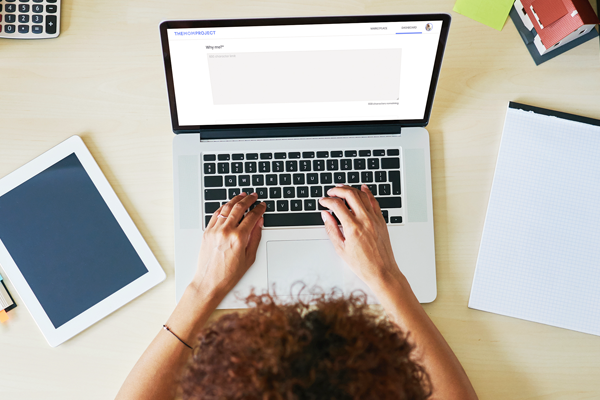If LinkedIn is known for one thing, it’s job searching. Every minute, four people are hired through the platform, and 81 applications are submitted every second. The company has undoubtedly mastered what it takes to be a hub for job seekers. But it has more than 770 million users worldwide, and in a given week, only about 40 million of them actively job searching, so what’s going on with the other 730 million?
Most of us created LinkedIn profiles when we were actively job searching, but what’s nice about the platform is that it doesn’t make you delete your information when you’re no longer actively searching for a job. Instead, your information is saved in the form of a profile which allows you to use the platform as a professional social media site, making connections with fellow professionals, sharing content, posting your thoughts and updates, and joining groups. It is through these secondary functions that users can expand their networks significantly.
Here’s how to do it.
Making Connections
Aside from job searching, making connections with fellow professionals is something most LinkedIn users know how to do. However, the best way to establish and interact with these connections varies based on who they are and whether or not you know them personally.
Connecting With The People You Know
Chances are, you’re connected with your inner circle on LinkedIn, which may include your family, friends, and close colleagues. If you’re not connected to them, go ahead and start that process now. Since you have a personal relationship with these people, you can simply send over a request without adding a note since you don’t need to introduce yourself or provide context for why you’re trying to connect (of course, you can always send a message to say hello).
After you’ve reached out to all of these people, start sending requests to people you know personally but maybe haven’t spoken to in a while. It could be former co-workers or supervisors, people you’ve been in organizations or classes with, or even old friends with whom you lost touch over the years. What makes this group a little different, though, is that you will probably want to include some kind of note when you ask them to connect. It doesn’t have to be anything super formal. Still, a quick sentence or two saying hello and asking how they are will open you up to more conversation, which could make it easier for you to reach out to them down the road if there’s a job you want that they could help you get.
Connecting With The People You Don’t Know
As you continue to expand your network, you will start connecting with people your friends introduce you to or with who you have a shared connection in general (even if you aren’t introduced formally). You may also randomly come across people on the platform who work at a company you’re following or hold a job similar to what you do that you’d like to network. You don’t need to have a personal relationship with these people, so you will want to treat their requests a little differently.
When adding these LinkedIn users to your network, be sure to include a note of some sort introducing yourself and giving them some context for why you’re trying to connect. For instance, if you have a shared connection, you can mention that in the note. Your first interaction with them should be pleasant and without any strings attached; don’t try to connect with a stranger by asking them for a favor of some sort. If they don’t respond right away, you can follow up after a couple of weeks. But if they don’t respond after that, then assume they’re not interested in connecting at this time.
Follow Feature
There are all kinds of public figures and thought leaders on LinkedIn, too, but a lot of them don’t give LinkedIn users the option to actually connect with them (and even if you could, you’d probably end up lost in masses anyway). However, these people tend to share great content and guidance that can be helpful in your career and job hunting, and you can make sure that all end up in your feed by “following” them on the platform.
Likewise, you can also “follow” companies that you’re interested in on LinkedIn. This way,, whenever they post news about the organization or job openings, you don’t miss the announcement because it will come right to your feed.
While following a person or a business doesn’t grow your network, it often provides you with opportunities to interact with posts and other people who do the same. Through this, you may find professionals with similar interests and or ideas that you’d like to connect with personally, allowing you to expand your network.
LinkedIn Groups
LinkedIn also gives users the option to join and create groups based on interests, specific careers, industries, and more. First, take some time to join existing groups by clicking the “Groups” link on the left-hand side of the home screen and clicking “Search” at the bottom of the page. From here, you can type in different keywords to help you find communities of people that you’d be interested in connecting with.
If there doesn’t seem to be a group dedicated to what you’re searching for, you can create your own by clicking on “Groups” on the homepage then “Create a Group” in the top right corner of the following page. By doing this, you will automatically serve as an admin, meaning you’ll be responsible for setting rules and moderating the page.
Whether you create a new group or join an existing one, they are great for growing your network. Each group is its community to post comments, share content, and ask questions with peers. They allow you to interact with people even if you don’t have any shared connections, which means you can add them to your network and chat with them one-on-one outside of the group setting.
Content & Interactions
As the platform has evolved over the years, LinkedIn has added new features to branch out more in organic ways. Two of the best ways they have done this is by allowing users to post updates and create and share content.
Posts
The best comparison for LinkedIn posts is Facebook statuses where you can write about what’s on your mind and share it so that it shows up in the feeds of your friends and followers. The same option is available on LinkedIn. However, it’s essential to keep these updates and posts professional, especially if you’re actively trying to expand your network. When posting, include updates of when your company or team is hiring, announcing that you are actively looking for a new opportunity, celebrating a significant milestone, or sharing your thoughts on a current industry or career-specific event.
Content
In addition to general posts, you can also create and share more advanced content like photos, articles, videos, and polls. These types of posts should be made with the idea that they will be shared across LinkedIn, meaning you’ll want them to be extra polished and professional. Use this as an opportunity to highlight your strengths by sharing links to articles you are mentioned in, writing articles with thoughtful insight into your industry or profession, or any other way you can think of that allows you to subtly humbly brag.
Growing Your Network With Posts & Content
Whenever you post something, whether it’s a general post or some other kind of content, it shows up in the feeds of your connections, which allows them to see it and interact with it using the reaction buttons or comment on it. If they comment or react to your post, that might show up on the feeds of their contacts, which means what you shared is reaching a whole new audience and allowing you to interact and connect with a new pool of people.
Similarly, when you see a post or content by one of your connections on your feed, you can potentially open yourself up to new connections by interacting with the post. Better yet, if someone you’re not connected with has left a comment on the post of someone you know, you can respond to them directly with a comment of your own, which can lead to a connection either now or down the road.
📖 Read more: Discover the best ways to interact in online communities to build networks that will help you in your career and beyond.
Stop Thinking Of LinkedIn As Just A Job Platform
Yes, LinkedIn is an excellent resource for job searching, but it’s also an incredible place to grow your network. Between personal contacts, shared connections, groups, and post interactions, there are many opportunities to engage with other professionals and create relationships with people who extend way beyond the circles you typically engage in. Don’t get too comfortable and assume your network is complete because even if you already have a network of one million people, there are still 770 million+ more LinkedIn users out there that you haven’t connected with yet.
Join our professional member network
Whether you’re searching for your next opportunity, looking to give or get career guidance or just getting started—you’re in the right place. 



